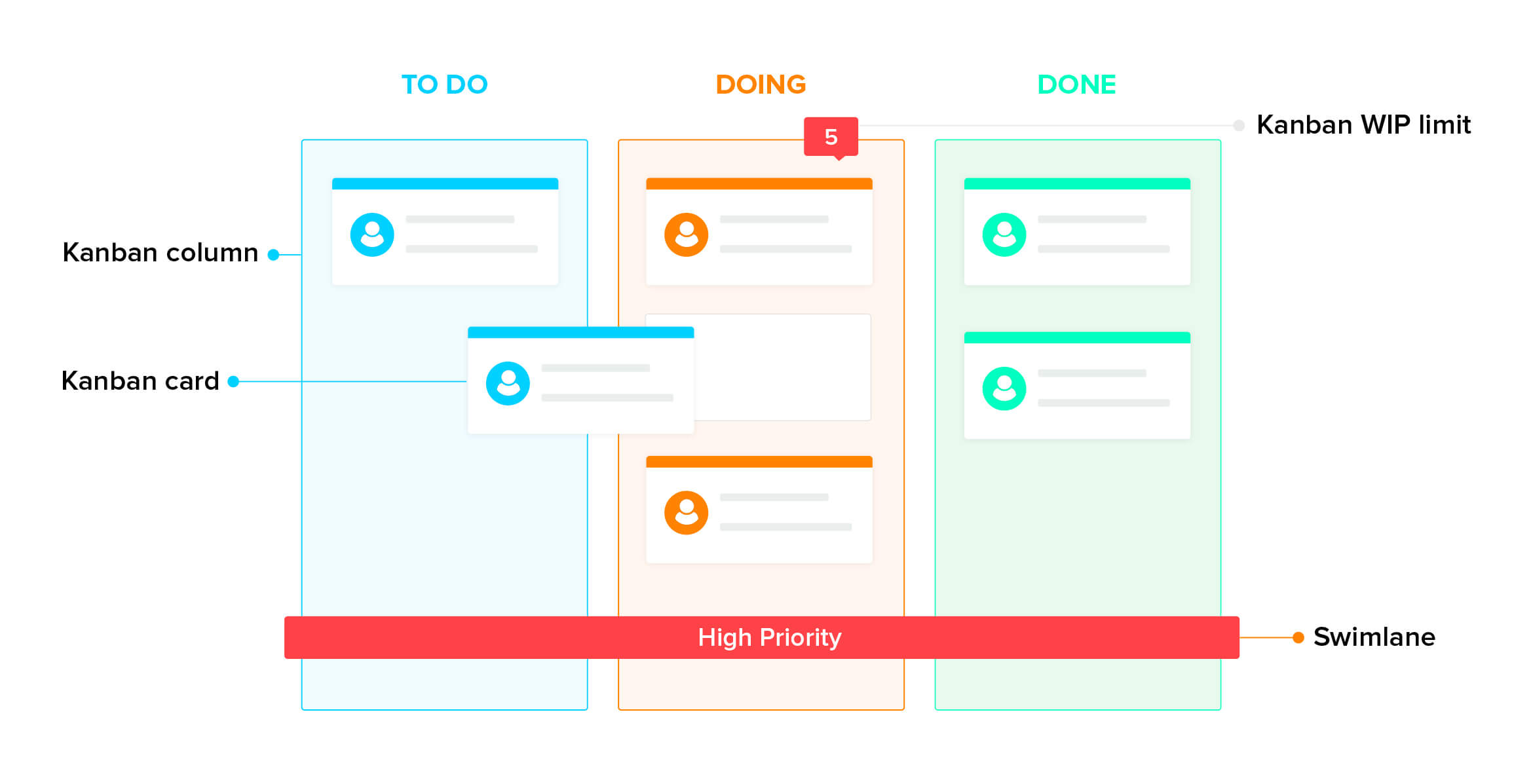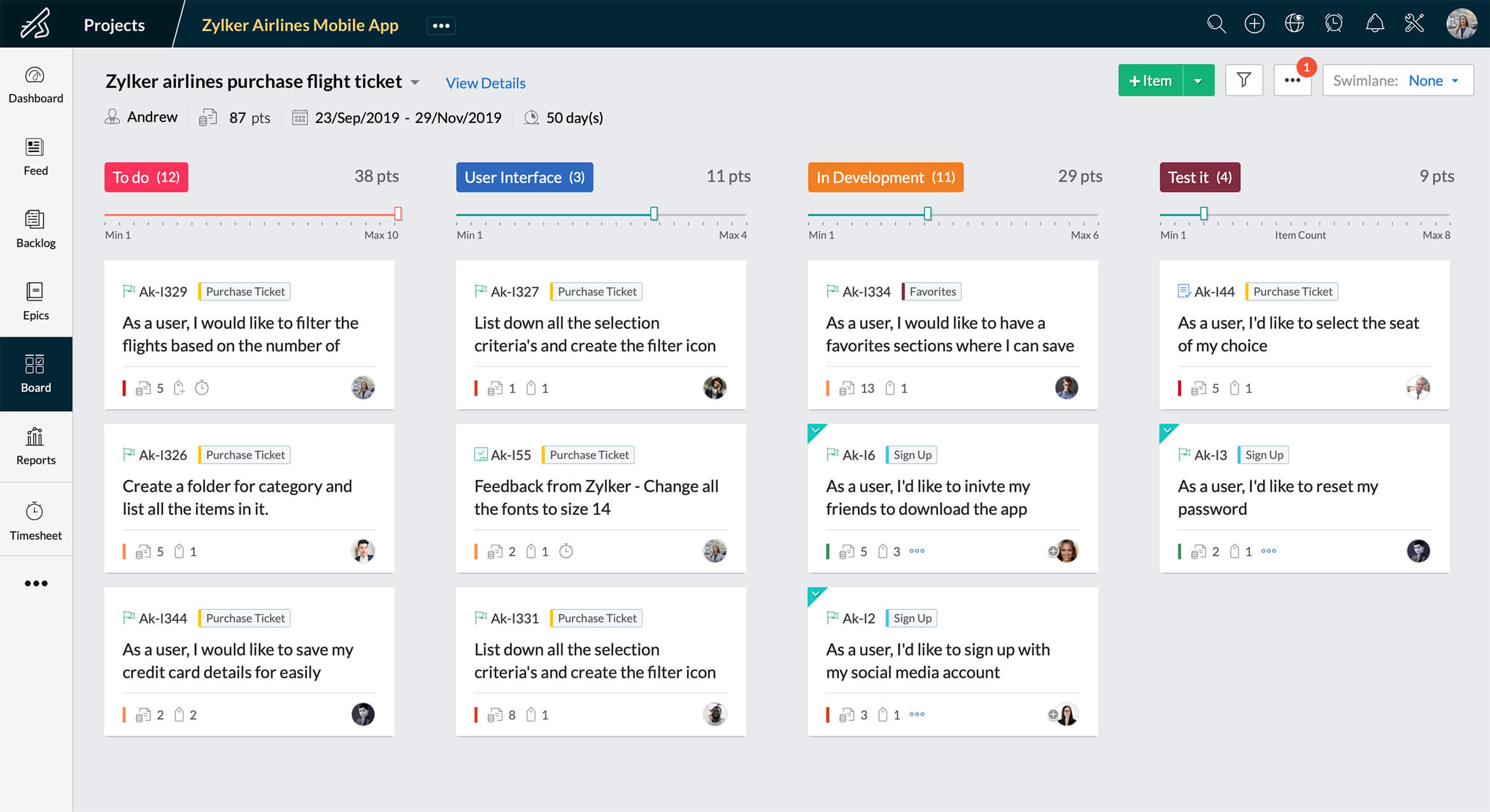Origins of Kanban
Taiichi Ohno created the Kanban system at Toyota in the 1940s. Ohno was inspired by supermarkets stocking their inventory with just enough products to meet consumer demand, and applied the same "just in time" principle to Toyota's production process. Toyota's line workers used this system to signal their need for a component. This helped Toyota match their inventory with demand, thereby reducing waste.
What originated from the era of manufacturing found its application in implementing Agile and lean management methods. In 2004, David J. Anderson applied the principles of Kanban to software development at Microsoft. Today, the Kanban process has evolved into a popular method to track projects across several IT and non-IT teams.
It is said that improvement is eternal and infinite. It should be the duty of those working with Kanban to keep improving it with creativity and resourcefulness without allowing it to become fixed at any stage.
Meaning of Kanban
In Japanese, the meaning of the term "Kanban" is "visual signal" or "card." Kanban draws on the Japanese philosophy of Kaizen, the idea that small and continuous changes result in a substantial improvement over time.
Why do you need to implement Kanban?
To illustrate this point, let's take the example of a software development process, which begins when customers request features and ends when developers create new iterations versions of software. When customers submit requests, teams are expected to deliver as soon as possible. To remain competitive, many teams tend to expedite work and overburden themselves with multiple user stories. Pressure mounts at the inflow, and more work gets pushed onto teams. This mistake of overburdening teams impacts the quality of the outcome.
If there is no explicit limit to work in progress and no signaling to pull new work through the system, it is not a Kanban system.
How does the Kanban system work?
The Kanban method follows a pull system, where teams are encouraged to match the amount of work in progress to their capacity. Kanban teams pull work items from their backlog only when the team's capacity becomes available. Limiting work in progress helps teams maintain a level of quality before a work item is considered done. During this process, no other work is pushed onto the board.
What is a Kanban board?
A Kanban board is the visual representation of your team's work. A typical Kanban board consists of a Backlog with three Kanban columns: "To do," "Doing," and "Done." A Kanban card contains essential details about the work item, such as the title, description, status, and assignee.
Each column on your Kanban board should include a work-in-progress limit. There's no rule of thumb for setting these limits, since it depends on each team's capacity and the nature of the work. A simple example of a work-in-progress limit could be, "Not having more than 3 Kanban cards in the 'Doing' column at any given time."
Working on a Kanban board is like an air traffic controller visualizing and directing flights at an airport. The backlog consists of a list of flights that are scheduled to take off or land. At any given time, the air traffic controller is focused on making sure that only one aircraft is allowed to use the runway for taking off or landing.

What are Kanban cards?
Kanban cards are the core visual tools in the Kanban process. Each card represents an individual task or work item that needs to be completed. The movement of the card across the board indicates the status of the work item it corresponds to. The various details pertaining to the work item are also mentioned on Kanban card. Some of the common essential detail fields include:
- Task Title: Name the task.
- Description:Brief information about the task.
- Due Date: The expected or calculated completion date.
- Priority:The urgency level of the task.
- Asignee:The person responsible for the task.
4 core principles of the Kanban Method
1. Start the adaptation with your current work process
Unlike other Agile processes like Scrum or Extreme Programming, the Kanban process is very versatile and flexible. It can be readily applied to your team's existing work practices.
2. Work towards incremental change
Introducing major process changes suddenly can cause problems for your teams. The Kanban system acknowledges this and thus focuses on continuous improvement and incremental changes. This helps to evolve your team's processes efficiently over time.
3. Respect existing roles, responsibilities, and processes
The special quality of Kanban among other agile processes is that it does not have any pre-defined roles. It will fit perfectly with your existing team structure and process flow. Your existing process might also have certain well-functioning elements that may get lost if you try to revamp it entirely in a short duration.
4. Encourage acts of leadership across levels
Kanban lays emphasis on continuous improvement and gives value to change regardless of where it comes from. The "top-down" hierarchy doesn't exist in this aspect, and all team members are encouraged contribute in making the processes better.
Practices of Kanban
1 Visualize work
Our brains can process visual information much faster than text. When you make tasks into visible Kanban cards, it helps visualize the flow of Kanban cards moving across your Kanban system and makes it easier to collaborate with your team.
2 Limit work in progress
Many believe multitasking makes them more productive, but in reality, we tend to lose focus by constantly re-prioritizing and juggling between tasks. If you feel you are overburdened and far from getting anything done, Kanban's work-in-progress limit is your remedy. Dedicating your attention to a limited number of tasks keeps your mind from wandering.
3 Focus on flow
When the first two practices of Kanban are in place, a team should then work on identifying and resolving disruptions in the flow. Stand in front of your Kanban board and ask: "How does the work flow? Where does the work get stuck?" Discussing the flow of work in daily stand-ups and retrospective meetings helps your team evaluate the health of your Kanban system.
4 Continuous improvement
Continuous improvement is all about inspecting your processes and finding ways to generate the most value while removing as many unproductive activities as possible. The Japanese philosophy of Kaizen, or "good change," holds that each member of a team must take part in improving their processes in order to create sustainable change.
Benefits of using the Kanban system
1 Versatility
Implementing the Kanban system doesn’t force you to revamp your processes, and its versatility allows it to be easily adapted across industries. Today, Kanban is popularly used in software development, incident management, sales, marketing, customer support, and HR. If you take a look at Kanban practices, you'll see it can be used by any team in your organization.
2 Increased focus and productivity
Eliminating waste and improving productivity is an integral part of a continuous improvement process. Traditional processes of multi-tasking and context switching often wastes time and energy. By applying the Kanban practice of work-in-progress limits, you eliminate unproductive days and create a focused environment for your teams to deliver high-quality work.
3 Empowered teams and improved collaboration
The entire team shares the responsibility of maintaining a smooth workflow across the Kanban system. This promotes synergy between cross-functional teams, creates a culture of collaboration, and makes everyone feel encouraged to contribute.
4 Better responsiveness
The birth of Kanban was a response by Toyota to eliminate waste and improve the quality of their manufacturing processes. The Kanban practices of constant reflection and continuous improvement help businesses to be more agile and make well-informed decisions.
Scrum vs Kanban
Scrum and Kanban are considered to be the two most widely used agile project management methodologies. As they fall under the umbrella of agile frameworks, they both have a lot in common but, at the same time, many differences as well. The major difference that can be observed between them is that Scrum is a lot more prescriptive in terms of components compared to Kanban.
You can have a look at our dedicated Scrum vs Kanban comparison page to know more.
Implementing a Kanban System with Zoho Sprints
Digital Kanban boards, one of the most popular Kanban tools today, have been modernized to provide more perspective with functionalities like custom fields, dependencies, and workflows.
In Zoho Sprints, you can practice the best of both Scrum and Kanban systems with Scrumban. The Sprints Kanban board empowers your team and improves collaboration by giving everyone a clear snapshot of where the team stands by sending real-time updates to the Scrum board. Set work-in-progress limits on your Scrum board and identify bottlenecks by visualizing your work in swimlanes. Use status columns with images and color codes to help improve your team's focus and attention.
Want to try out the Kanban system with your team? Give Zoho Sprints a try today and see how you can maximize your team's productvity and create a culture of continuous improvement with the Sprints Scrumban system.
